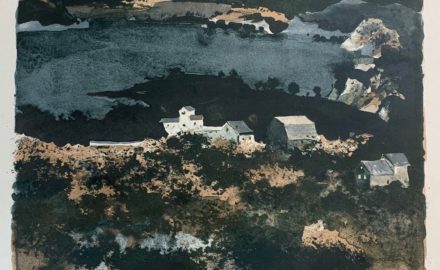Born in Waterville, Minnesota, Adolf Dehn began creating artwork at the age of 6. For the first two decades of his student and professional life he worked almost entirely in black and white as a natural and expressive watercolorist. By1920, after formal training as an illustrator and lithographer, he began to create ink drawings and lithographs, which he was able to sell and supported him though the difficult years of the depression.
In the early 1920’s Dehn moved to Europe, and he developed his imagery for the decade, which was made up of cabaret, park scenes, burlesque and landscapes of the roaring 20’s in Europe. He returned to the Midwest during the depression and by 1936 started to work in the watercolor medium. He discovered that he liked the watercolor medium, its characteristics and finish, its very fluidity, its suitability for either deliberate or spontaneous effects.
Significantly, watercolor also agreed with Dehn’s open, effusive, and passionate character. During the 30’s and 40’s, Dehn’s favorite subjects were the farmscapes of the Midwest and later the Northeast. His eventual home of New York City also became a frequent subject matter for Dehn, who captured the essence of the city’s burlesque, Central Park, Harlem nightclubs, industrial yards and high society.
Dehn died in New York City in May 1968 and left behind a vast body of lithographs, watercolors, drawings and prints, which are in the permanent collections of nearly 100 museums across the United States and Europe.










